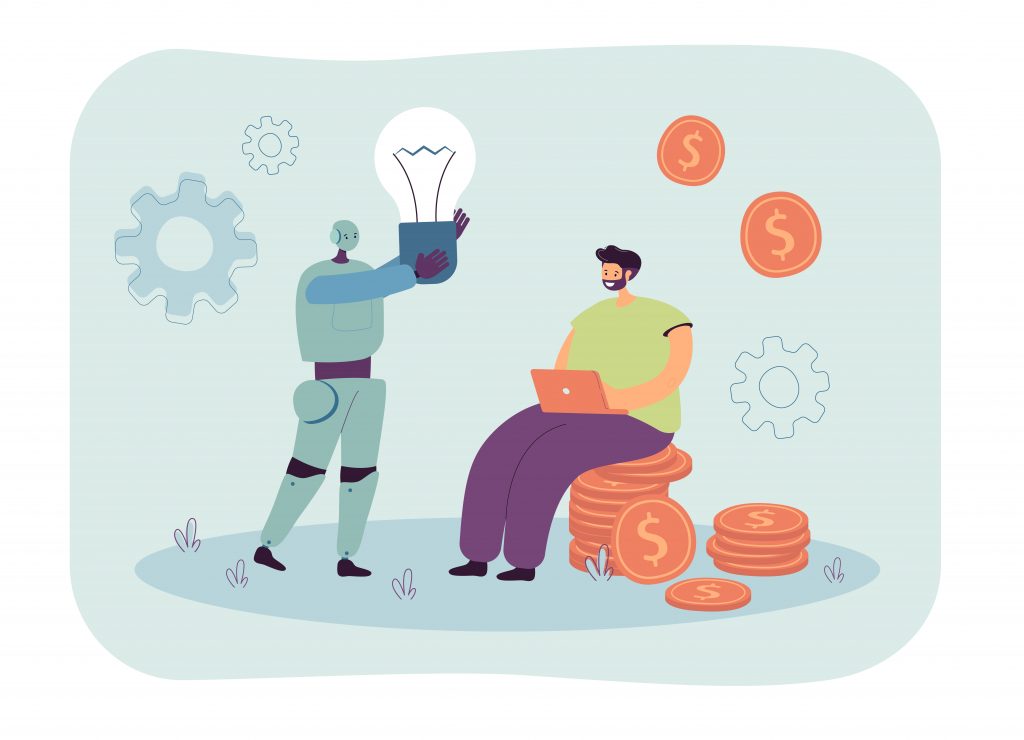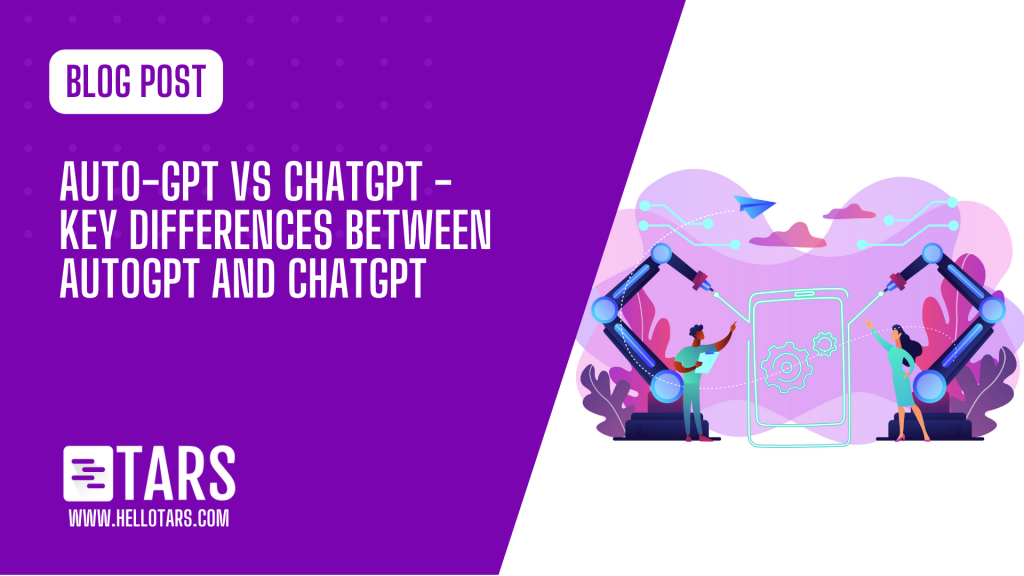Auto-GPT vs ChatGPT – this is a common comparison that riddles people. These two terms are often mentioned In the world of natural language processing (NLP). But what are they, and how do they differ?
In this blog post, we’ll explore the basics of both Auto-GPT vs ChatGPT, and help you understand what they are and the key differences between them.
What is Auto-GPT?

Auto-GPT is an algorithm for natural language processing that is based on the GPT (Generative Pre-trained Transformer) architecture. It is designed to automate the process of generating natural language text, without the need for human intervention. Auto-GPT is trained on a large dataset of text, and then fine-tuned for specific use cases.
Some key features of Auto-GPT include:
- The ability to generate coherent and fluent text
- The ability to produce text in a variety of styles and tones
- The ability to generate text based on a given prompt or topic
- The ability to produce text in multiple languages
Auto-GPT is used in a variety of applications, such as chatbots, language translation, and content generation.
What is ChatGPT?
ChatGPT is a specific application of the GPT architecture that is designed to generate text for conversational purposes. It is trained on a large dataset of conversational text, and is fine-tuned to generate text that is appropriate for use in chatbots and other conversational interfaces.
Some key features of ChatGPT include:
- The ability to generate text that is natural and engaging
- The ability to understand context and generate appropriate responses
- The ability to learn from user feedback and improve over time
ChatGPT is used in a variety of applications, such as customer service chatbots, virtual assistants, and social media chatbots.
Now that we have learned what Auto-GPT and ChatGPT are, let’s dive deeper into Auto-GPT vs ChatGPT and learn about the key differences between them.
Auto-GPT vs ChatGPT – Main Differences

While Auto-GPT and ChatGPT share a similar architecture and are both designed for natural language processing, there are some key differences between the two.
Training Data
One of the most significant differences between Auto-GPT and ChatGPT is the type of data they are trained on. Auto-GPT is trained on a diverse dataset of text, which includes a wide range of topics and styles. This allows it to generate text on a variety of subjects and in different styles, such as formal or informal.
In contrast, ChatGPT is specifically trained on conversational data, which includes text from messaging apps, chat logs, and other sources of conversational text. This allows ChatGPT to generate text that is more natural and engaging for use in conversations.
Use Cases
Another key difference between Auto-GPT and ChatGPT is the range of use cases they are designed for. Auto-GPT is a more general-purpose tool, and can be used in a wide variety of applications, including content generation, language translation, and even creative writing.
In contrast, ChatGPT is primarily designed for use in conversational interfaces, such as chatbots and virtual assistants. This is because it is specifically trained on conversational data, and is better equipped to generate text that is appropriate for use in these types of applications.
Output
The output generated by Auto-GPT and ChatGPT also differs in significant ways. Auto-GPT generates text that is not necessarily tailored to any specific use case, and can be used in a variety of applications. This means that the text generated by Auto-GPT may not always be suitable for use in a specific context, such as a chatbot or customer service interface.
In contrast, ChatGPT generates text that is specifically tailored to use in conversations. This means that the text generated by ChatGPT is more likely to be natural and engaging for use in chatbots and other conversational interfaces.
Model Size
Auto-GPT and ChatGPT have different model sizes. Auto-GPT typically uses larger models, with more parameters, which can generate more complex and sophisticated text. This makes it a better choice for applications where the quality and sophistication of the generated text is important.
In contrast, ChatGPT typically uses smaller models, with fewer parameters. This is because it is designed for use in conversational interfaces, where speed and efficiency are more important than generating complex or sophisticated text.
Contextual Understanding
Another difference between Auto-GPT and ChatGPT is their ability to understand and use context. Auto-GPT is better at understanding context, and can generate text that is more closely related to the input text. This makes it a better choice for applications where context is important, such as content generation or language translation.
In contrast, ChatGPT is designed to generate text in a conversational context, and is better at understanding the context of a conversation. This allows it to generate more engaging and natural-sounding text for use in chatbots and other conversational interfaces.
Performance
Finally, a key difference between Auto-GPT and ChatGPT is their performance in terms of speed and efficiency. Auto-GPT typically takes longer to generate text, as it uses larger models and more complex algorithms. This makes it a better choice for applications where quality is more important than speed.
In contrast, ChatGPT is designed to be fast and efficient, with smaller models and simpler algorithms. This makes it a better choice for applications where speed is more important than generating complex or sophisticated text.
Auto-GPT vs ChatGPT: Which is better?
If you are wondering which of these GPT models are superior, I’m afraid there is no one right answer. The answer to this question completely depends on the specific use case or scenario.
For example, if you need to generate content for a blog post, Auto-GPT would likely be a better fit. On the other hand, if you need to build a customer service chatbot, ChatGPT would likely be the better choice.
It’s also worth noting that Auto-GPT and ChatGPT are not mutually exclusive – it’s possible to use both in different parts of a larger system.
Want to Enhance Your Business with the Power of AI? We Can Help

You can simply book a free demo and our expert team will not only help you understand how AI can enhance your business but will also take you through the entire process of how you can start using it right away.
In the meanwhile, you can also check out our powerful new AI chatbot-builder – TARS Prime. TARS Prime chatbots can be trained on your website’s content or any other knowledge base of your preference, such as links or PDFs.
All you need to do is copy and paste your desired URL or PDF link in the space provided and click on the ‘create chatbot’ button. The builder will get to work and your chatbot will be ready in less than a minute.
TARS Prime is powered by ChatGPT and the bots it creates function just like ChatGPT. However, unlike ChatGPT, TARS Prime bots can be customized for your specific business and needs.
You can try it out here: https://hellotars.com/ai
Or,
You can book a free demo and our team of experts will personally walk you through the entire process and help you leverage the power of this advanced tool.

My name is Vinit Agrawal and I am the Founder and CTO of Tars. I have been working on the Tars Chatbot Builder since 2015 and my core strength is in building software products with simple and functional user experiences focusing on bringing some core business results. My current role in the company is a mix of Product Manager, Engineering Manager and in Business & Marketing Strategy.

0 Comments on "Auto-GPT vs ChatGPT – Key Differences Between AutoGPT and ChatGPT"